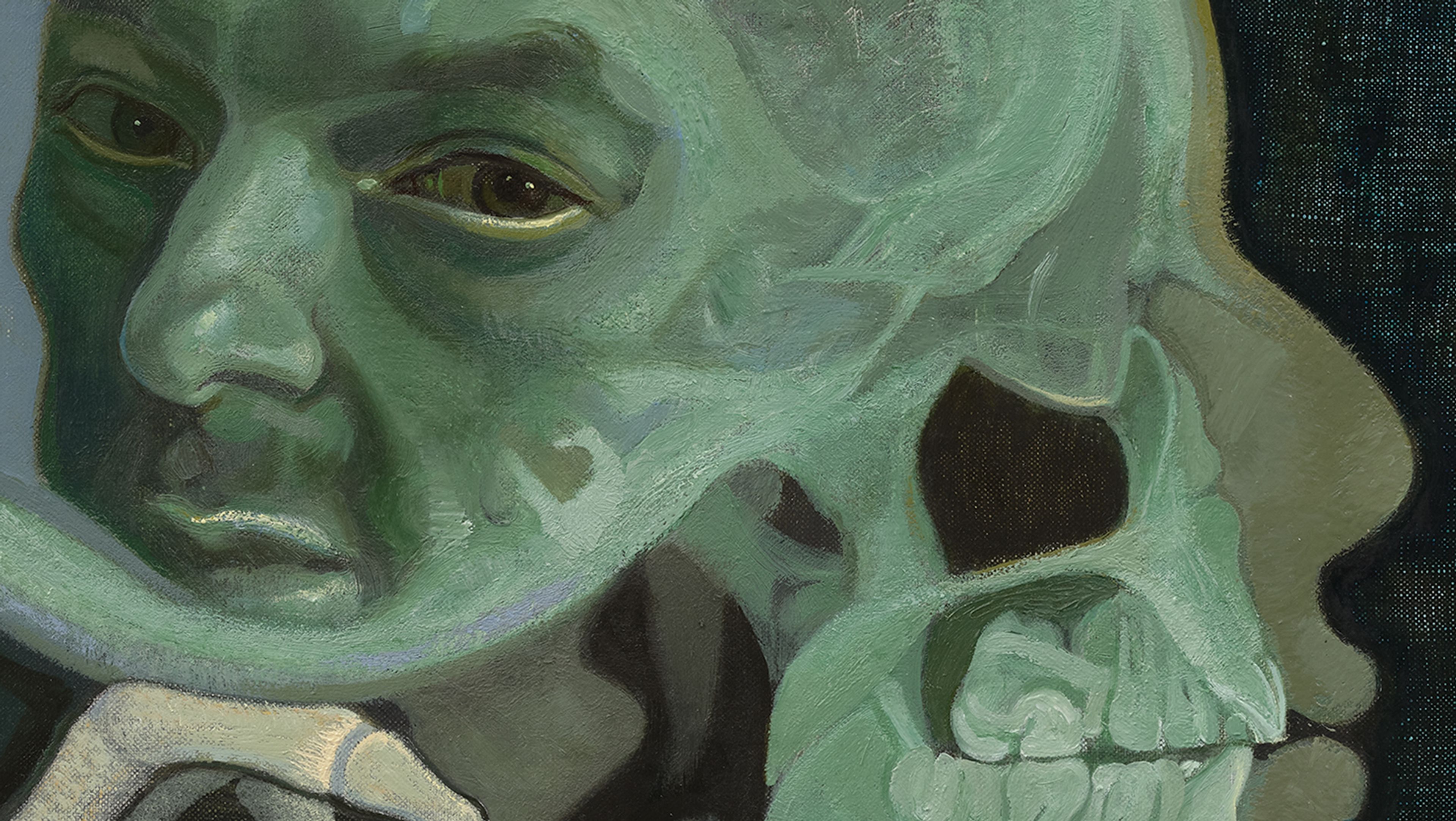'Victor Man: How to Paint Death' By Alessandro Rabottini
September 2025
For decades, the artist has made paintings that, for all their productive anachronism, feel both astral and intimate
When I was young, the thought that my mother might die terrified me. Back then, before I had understood that dying is not optional, my mother would tell me that, were it ever to happen, I shouldn’t worry because she wouldn’t disappear; she would just become very tiny, and I could then carry her around in my pocket. She would become something else. Over time, I learned that ‘becoming something else’ happens very rarely in life but quite frequently in art. In Victor Man’s art, it happens a lot: to both people and things.
An artist of vivid, nocturnal imagination, for the past two decades the Romanian-born, Cluj- and Rome-based artist has made paintings that feel both astral and intimate. His subjects often revolve around a few familiar figures, subjects of his affections: his repertoire is concise, often auraed with domesticity, yet sometimes crossed by presences with which we have mostly lost affinity, such as archangels of the type seen in altarpieces or symbolic characters from archaic legends. Intimacy also informs the scale of his canvases, which often invite viewers to lean in and peer closely: Man’s art is not one of magnitude but of a whispering proximity. His palette, too, is pointedly minor-key: livid and pensive, flickering in what otherwise seems to be a perpetual twilight, lit up at times by sudden phosphorescences. Here, things lie very close to each other, memory is tangible and proximal; sleep and wakefulness interweave; death accompanies the living.
